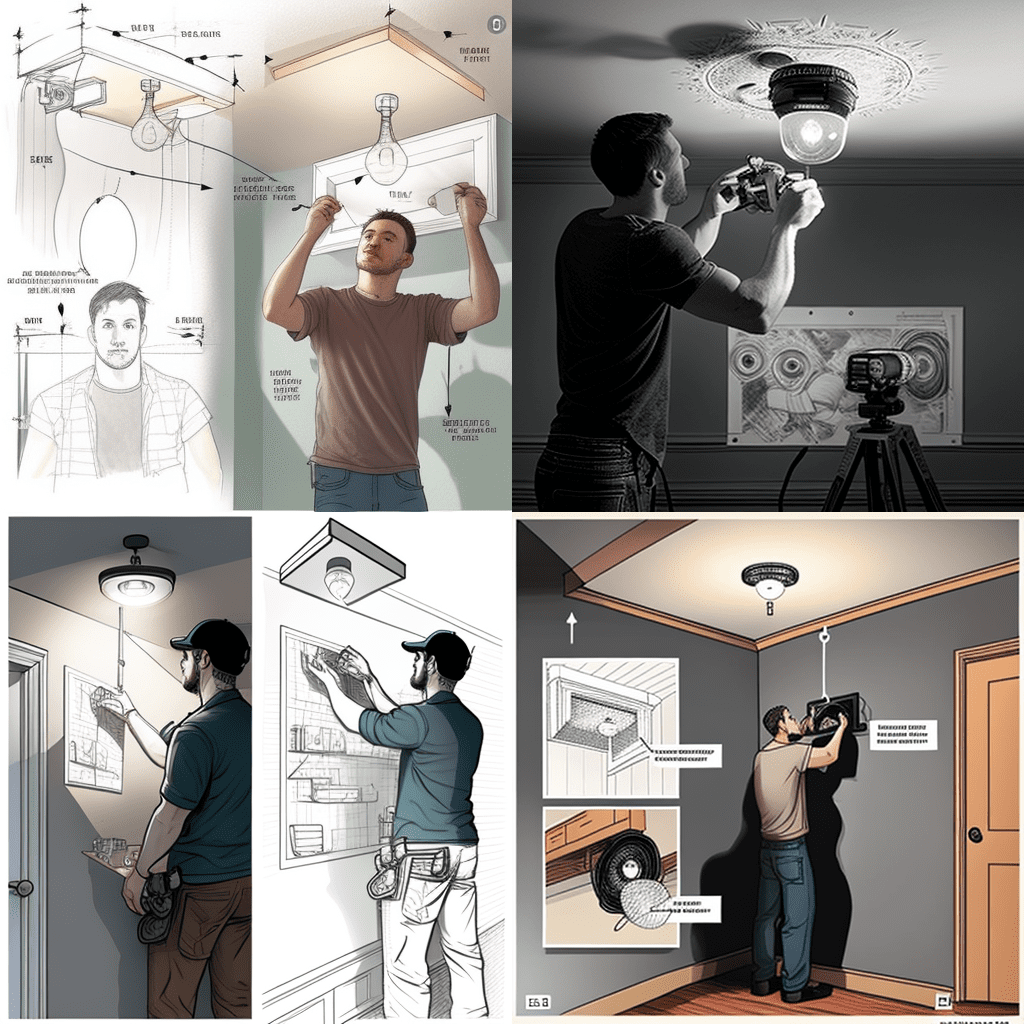

Frequently Asked Questions
How Do I Choose The Right Bulb For My Ceiling Or Wall-Mounted Light Fixture?
When choosing the right bulb for a ceiling or wall-mounted light fixture, there are several factors to consider.
One of the most significant considerations is whether to use LED or incandescent bulbs.
LED bulbs are more energy-efficient and longer-lasting than traditional incandescent bulbs, making them a popular choice for modern lighting installations.
Another consideration is wattage, which determines how much power the bulb uses and its brightness level.
It’s essential to choose the appropriate wattage based on the size and purpose of the room where the fixture will be installed.
Finally, brightness is another crucial factor when selecting a bulb for a ceiling or wall-mounted fixture.
The right brightness level depends on the specific requirements of each installation, including whether it will be used primarily for task lighting or ambience.
As a lighting installation expert, it’s crucial to consider all these factors carefully when advising clients on their lighting choices to ensure that they achieve their desired results while also being energy-efficient and cost-effective.
Can I Install A Ceiling Light Or Wall-Mounted Light Fixture On My Own, Or Do I Need An Electrician?
When it comes to installing a ceiling light or wall-mounted light fixture, there are DIY installation risks to consider.
While some may feel confident in their abilities to handle electrical wiring, it is important to note that mistakes can be costly and dangerous.
Hiring a professional electrician ensures proper installation and reduces the risk of electrocution or fire hazards.
As a lighting installation expert, my recommendation is to prioritize safety by seeking the assistance of a licensed electrician for any installation needs.
Remember, when it comes to electrical work, it’s always better to be safe than sorry.
What Are The Different Types Of Ceiling Light Fixtures Available, And How Do I Choose Between Them?
When selecting a ceiling light fixture, there are a variety of factors to consider.
Ceiling light designs can range from traditional chandeliers to modern flush mounts, and each offers its own unique aesthetic appeal.
Factors impacting wall-mounted light selection may include the size and placement of the room, as well as the desired amount of illumination.
With so many options available, it is important to take into account both functional and stylistic considerations when choosing a ceiling light fixture.
As a lighting installation expert, I recommend researching various options to find the perfect fit for your space.
By carefully considering your needs and preferences, you can create a cohesive design that brings both beauty and functionality to any room in your home.
How Do I Determine The Appropriate Size Of A Ceiling Light Or Wall-Mounted Light Fixture For My Space?
Determining the appropriate size of ceiling light or wall-mounted light fixture for your space is crucial to ensure proper illumination and an aesthetically pleasing look.
Ceiling light placement and wall mounted light style are important factors to consider when choosing the right size.
For ceiling lights, consider the height of the ceiling and the size of the room. A larger room may require a bigger fixture or multiple fixtures, while a smaller room can benefit from a single compact fixture.
Wall-mounted lights should also be chosen based on the size of the room and the height at which they will be placed. Consider whether they will be used as task lighting or ambient lighting, as this will affect their size requirements.
Ultimately, it is important to choose a size that balances functionality and aesthetics to create an inviting atmosphere in your space.
Can I Install A Dimmer Switch For My Ceiling Or Wall-Mounted Light Fixture, And If So, How Do I Do It?
When it comes to installing ceiling or wall-mounted light fixtures, dimmer switch compatibility is a common question that arises.
While not all light fixtures are compatible with dimmer switches, many are.
It’s important to check the specifications of the light fixture before attempting to install a dimmer switch.
Wiring considerations also come into play when installing a dimmer switch.
It’s recommended to consult with a licensed electrician for proper installation and safety measures.
Adding a dimmer switch can provide flexibility and ambience to any space, but it’s important to ensure compatibility and professional installation to avoid any potential hazards.
Conclusion
Ceiling lights and wall-mounted wall lights are essential features in any home, providing functional illumination as well as aesthetic appeal.
Choosing the right bulb for your fixture is crucial, as it can affect the quality of lighting and energy efficiency. It is important to follow the manufacturer’s instructions when installing these fixtures to ensure safety and proper functioning.
There are various types of ceiling light fixtures available, such as chandeliers, pendants, flush mounts, and semi-flush mounts. The size of the fixture should be determined based on the dimensions of the room and its intended purpose.
For example, a client approached me with an interest in installing a ceiling light fixture in their dining room. After assessing the space, I recommended a chandelier with dimmable LED bulbs to create a warm ambiance during dinner parties.
By installing a dimmer switch, they were able to adjust the lighting according to their needs and preferences. This simple addition transformed their dining experience and added an elegant touch to their home.
In conclusion, ceiling lights and wall-mounted wall lights are versatile design elements that can enhance any living space while providing practical illumination. With proper consideration of bulb type, installation requirements, fixture type and size, and potential for dimming controls you can create beautiful lighting effects that meet both aesthetic and functional needs.
Whether you’re looking for ambient lighting or task-oriented illumination solutions – our expert team is here to help you with all your lighting installation needs!

